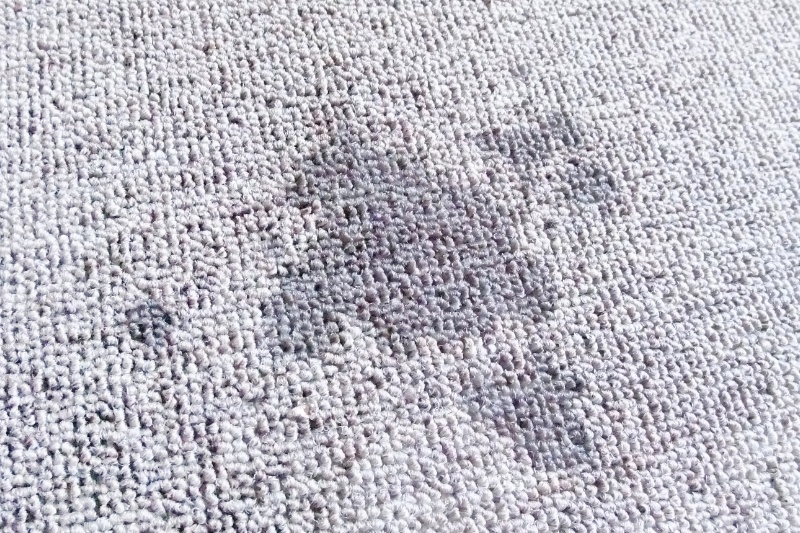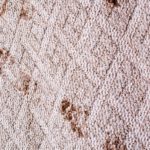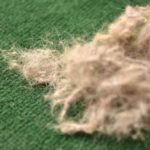Wet carpets can become bacteria-filled, mildewy, and smelly in a very short space of time.
The best thing you can do when your carpet gets wet is to dry it out immediately, so you can stop the issues listed above from putting in an appearance.
Drying a carpet isn’t always the easiest of tasks to carry out, but if you can dry a carpet effectively, you can save yourself a lot of money and hassle!
Follow the steps below to dry your carpet right now.
Tips Keep in Mind When Drying Carpets

Here are a few points to think about as you dry your wet carpet:
- Make sure the room with the wet carpet has plenty of fresh air going in and out of it. This will aid the drying process and may also help to remove lingering smell. The smell of stagnant water and dampness is quite aromatic at the best of times!
- Use fans and dehumidifiers to speed up the drying process.
- Act as fast as you can. The longer you leave the issue, the more time the liquid has to penetrate through the carpet’s fibres, into the underlay, and onto the floorboards.
- Find the source of the watery problem as quickly as you can, so you can prevent further damage.
- Check underneath the carpet for liquid damage. And sort the issue out as soon as you can to make sure the entire area dries properly.
- It may be worth cleaning your carpet after the watery episode just to make sure it’s clean and free from nasty bacteria!
- Don’t worry if you need to call a professional to help you out! Some carpets need to be cleaned, treated, and even replaced after they’ve been submerged in water. If this is the case for you, call the right people in to get the job sorted out before the issue escalates, and you have to repair/replace more than just your carpet.
- Keep kids and pets away from the wet carpet at all times!
- Wear protective gear when handling wet carpets, particularly if the carpet in question has been damaged by contaminated water.
Figure Out Where the Water Is Coming From
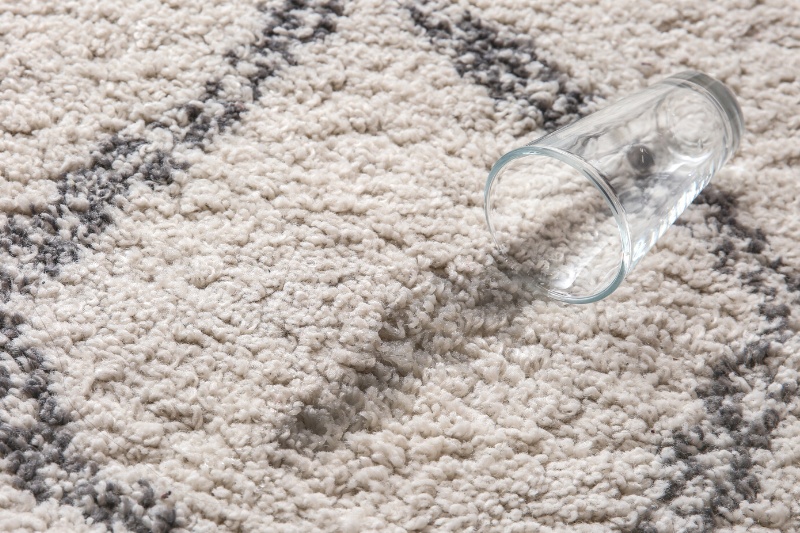
If you haven’t figured out where the water is coming from already, you should find out where the liquid is stemming from immediately.
The water could be coming from the following areas:
- Flood
- Leak
- Accidental spillage
When you know where the water is coming from, you can attempt to stop it. For example, you could turn the water off at the mains to stop water leaking from a pipe.
Once you’ve found the source of the problem and a measure(s) is in place to deal with the issue, you can start drying the wet carpet.
Drying a Small Patch of Wet Carpet
The steps below are suitable for slightly wet carpets. For example, if someone tipped a drink over the floor.
It isn’t suitable for carpets that have been the victims of a burst pipe, a major leak or flood damage!
Step 1: Soak up as much liquid as you can from the floor
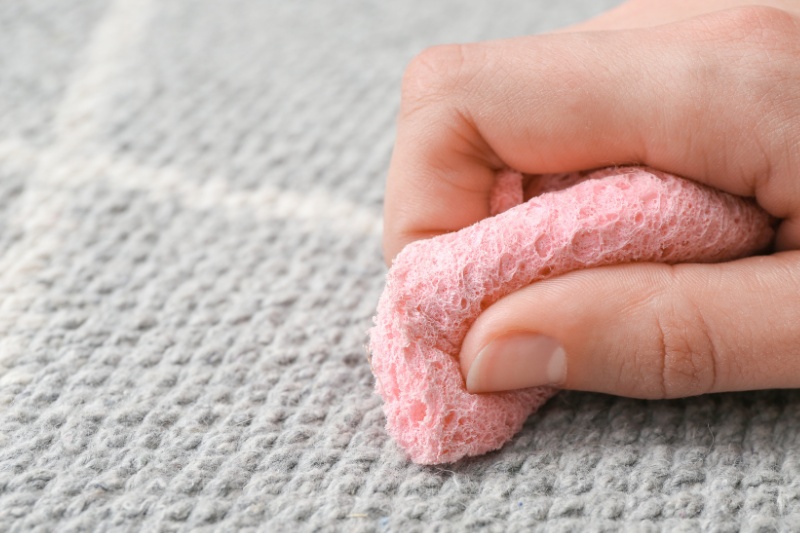
Spread several dry towels over the wet carpet and walk back and forth over them to soak moisture off the floor.
Continuously swap the soaking towels for fresh ones during this time, and continue to step over the towels to soak the water up off the carpet.
This activity may take some time to complete, but of course, it does depend on how liquid-ridden the patch of carpet is.
If it’s just a tiny spillage, you could complete this step in a few minutes!
Step 2: Check underneath the carpet (optional)
If you acted quickly and mopped up the liquid from the carpet, you may not have to carry out this step because the underneath of the carpet should be dry.
However, I think it’s better to err on the side of caution when it comes to mixing liquids and carpets, so it’s a good idea to check the underside of the carpet and the underlay.
A quick peek under the carpet could tell you if there’s any water pooling. And if there is, you can do something about it immediately, rather than waiting for the issue to escalate and ending up with mould or damp-related problems!
If you can see liquid when you pull the carpet back, wipe it away with a dry towel. And then point a fan(s) towards the area to dry the surface over serval hours! When the underlay is dry, you can put the carpet back down.
Step 3: Allow the carpet to air dry

When you’ve absorbed all the moisture from the surface, you can leave your carpet to air dry from this point on.
Open the windows and place a fan in the room to circulate fresh air around the room to speed up the drying process.
If your carpet needs a little help to dry, you can cover it with bicarbonate of soda and leave it overnight. You can then hoover the powder off the carpet the next morning after it has absorbed the rest of the moisture.
Step 4: Clean the carpet (optional)

As an extra step, you could clean your carpet with a carpet cleaner to remove any stains or dirt from it.
This step, however, is an optional step that you could take. So, if your carpet looks fine, doesn’t smell, and you’re happy with how it’s dried, skip this step!
Drying a Wall-to-Wall Wet Carpet
The steps below are suitable for large-scale problems, like those caused by a leak and a burst pipe. You can even use some of the steps to dry wet car carpets!
It is possible to use the steps below to dry a carpet that has been damaged by a flood. However, when it comes to flood-related issues and repairs, these are often left to insurance companies to sort out.
Often, the insurance company will send a professional out to assess the damage and decide how to deal with the wet carpet.
If this is the case with you, it would be better to wait until you hear back from the insurance company before you do anything that could hinder your claim.
Step 1: Move the furniture out of the room
One of the first steps you must take is to remove all your furniture from the room with the wet carpet. This will give you a clear space to work in!
(Some goods may be heavy, so get someone to help you move things around).
It’s also worth remembering that your furniture may also be wet. So, it’s worth putting your items on a plastic sheet to stop them from touching and damaging other floors around the house.
For example, you don’t want to move a settee that’s got wet feet into another carpeted room because you’re just shifting the problem around the house.
In addition to drying your wet carpet, you may have to dry your furniture, so factor in how and where you’re going to do this.
Step 2: Soak up as much liquid as you can from the floor
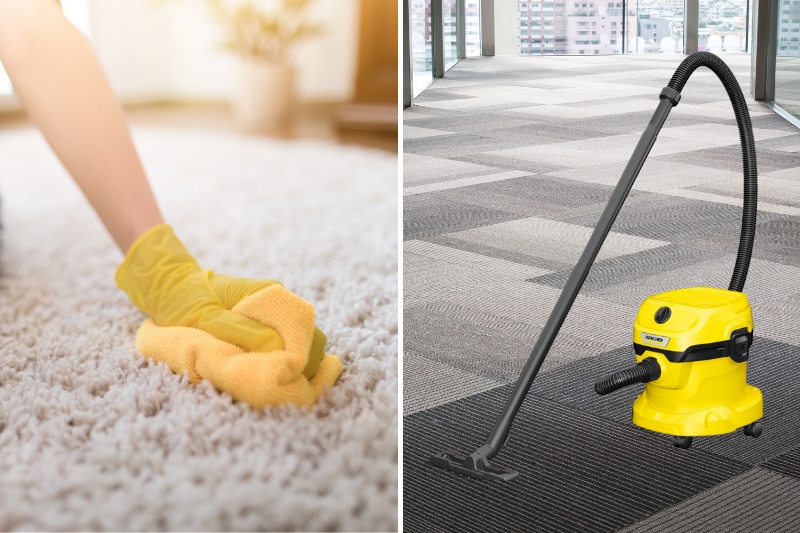
For significant issues, you will need to use a wet-dry vacuum cleaner, like the Karcher Wet & Dry Vacuum Cleaner WD 2, to suck up as much excess liquid from the floor as possible.
If need be, you can invest in industrial equipment to take care of the job, but you may need a professional’s help to handle the machine.
Using a machine like the one noted above will save you time in the long run, and you’ll be able to gather a lot of moisture from your carpet in one go.
It’s worth pointing out that a wet-dry vacuum cleaner is not a ‘normal’ vacuum cleaner. A wet-dry van can remove both wet and dry debris from a floor, whereas a ‘regular’ hoover just sucks up dry grime off a surface.
If you attempt to suck the liquid up of the floor with a regular vacuum cleaner, you will break it because it is not designed to pick up vast amounts of water!
If you don’t have a wet-dry vacuum cleaner at home, you can rent one for the day.
Tip: Keep an eye on the water tank. And empty the tank regularly to keep the machine functioning effectively!
Step 3: Repeat Step 2
Go over your carpet several times, just like you did in Step 2, to make sure you’ve gathered up the majority of the liquid from the carpet.
Carpets are excellent at holding water, so don’t be fooled into thinking that one trip around with a wet-dry vac will be enough!
This activity will take time, so take as long as you need. It’s all about doing a thorough job!
Step 4: Check underneath the carpet
If your carpet is soaking wet, it’s best to peel the carpet back and check underneath it after you’ve sucked up all the water. This step is just to ensure you haven’t got any standing water under the carpeted surface.
Pools of water underneath a carpet can lead to mould and mildew growth, and liquid can also damage and rot the floorboards. This is why the water must be removed properly from the very start!
If you do see water, move on to the next step!
Tip: A quick way to check if there’s water under your carpet is to do a ‘squidge test’. All you need to do is walk across your carpet and listen out for squidgy sounds. If you hear a squishy sort of noise, you’ll know that there’s water under your carpet.
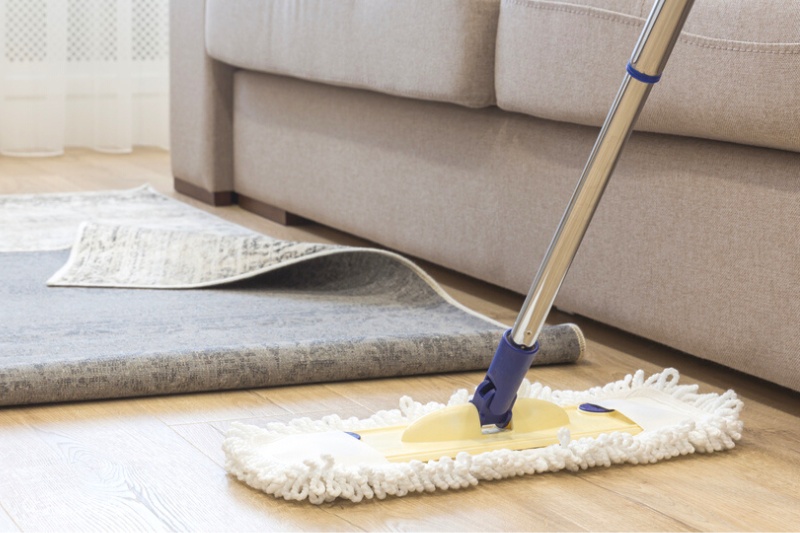
Step 5: Remove the water from under the carpet
To remove the water from under the carpet, you’ll need to pull the carpet back. It’s not exactly an easy job to carry out this next step, so you will likely need someone to help you.
To do this, you’ll need to carefully peel the carpet up from one corner of the room and roll it up, so you can take it outside to dry.
You should not cut, rip or do anything else to the carpet because if you ruin it somehow, it won’t fit back on the floor properly.
When the carpet has been removed, you can lay it out on a flat surface/hang it up to dry (use fans and dehumidifiers to speed up the drying process). If it’s a sunny day, allow the sun to dry your carpet for you!
After this, you’ll need to check the underlay to see if it has sustained any damage.
If the underlay seems slightly damp, you can allow it to dry naturally over a few hours.
To speed up this process, you can point some fans towards the floor, pop a dehumidifier in the room, and open the windows to ensure there’s good ventilation.
If you need to remove any water from the underlay, you can use the wet-dry vacuum cleaner to do this.
However, if the underlay is soaking wet, you’ll likely have to replace it. See Step 6.
Step 6: Replace the underlay (optional)
If your underlay is wet, but you’d like to try and save it, give it a whole day to dry. At the end of the day, check the underlay. If it still feels wet, it’ll need to be replaced.
It is possible to carry out this replacement work yourself, but you can also call a professional to help you.
Step 7: Put the carpet back in place
When the underlay is dry or has been replaced with a new one, and with a completely dry carpet in tow, you can start putting your floor back together.
Step 8: Clean the carpet
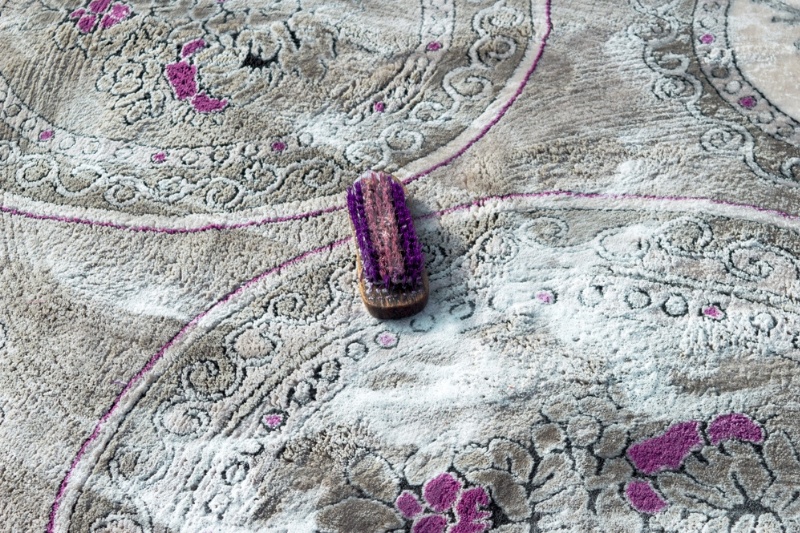
You should now clean your carpet to ensure it is hygienic, free from stains and safe for all the family to walk and sit around on! To do this, you can use an off-the-shelf carpet cleaner or make your own cleaner!
If you need to neutralise foul odours, sprinkle bicarbonate of soda over the entire carpet and leave it overnight.
The next day you can hoover the bicarb off the floor and the aromas will be vacuumed away as well.
Once you’ve cleaned the carpet thoroughly, you can leave the carpet to dry and then pop your furniture back into the room, provided the items have also dried!
When to Call a Professional
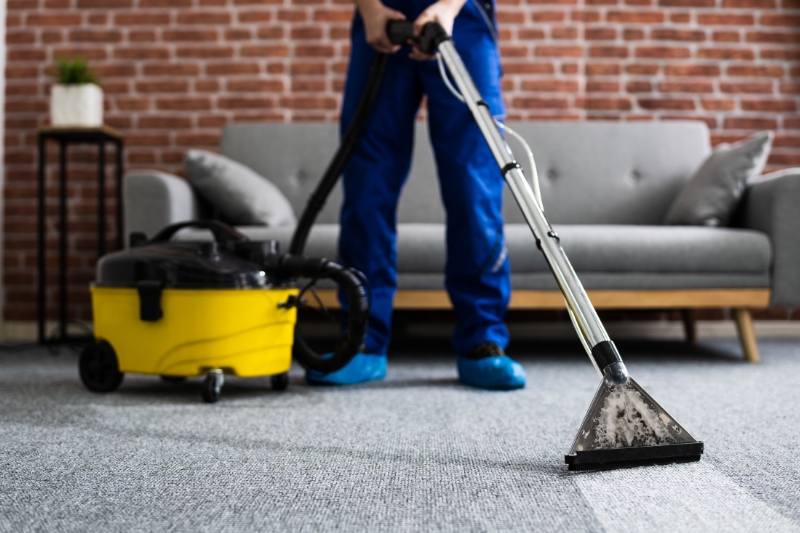
Drying and cleaning a carpet can be hard work. So, sometimes it’s better to call a pro in to help you with the work! And depending on how your carpet got wet, it may be better for you skip to this option anyway!
If, for example, you’ve been the victim of a flood, you’d need a specialist to come in with their equipment to handle the contaminated water for you.
A professional will assess the damage and advise you on how to move forward in the safest way. And they will have tools and products that are specifically designed to deal with problems like this, so it’s easier to let them carry out the work! If you were to try and deal with this type of problem, you might do more harm than good to yourself.
A quick online search will bring up specialists in this field.
How Long Does a Wet Carpet Take to Dry?
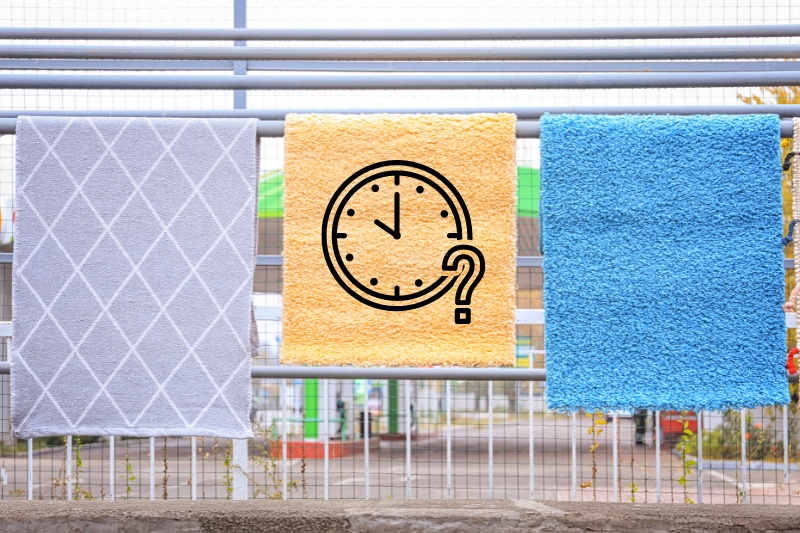
It can take up to 24 hours to dry a carpet. But in some cases, it can take even longer.
How long the drying process takes depends on a number of factors. Including:
- How well the carpet is dried out.
- If the water-related problem is addressed quickly.
- If you use any aids to speed up the drying process.
If you react fast, remove most of the water from the carpet, ensure the area has good ventilation, and use a dehumidifier during the drying phase, you stand a good chance of drying the carpet within 24 hours.
However, in some cases (for example, after a flood), it’s not possible to dry a carpet and make it hygienic and safe for a home. If this happens, replacing the carpet is typically the best option.
Tip: Don’t walk over a carpet until it is dry!
If Carpet Gets Wet, Is It Ruined?
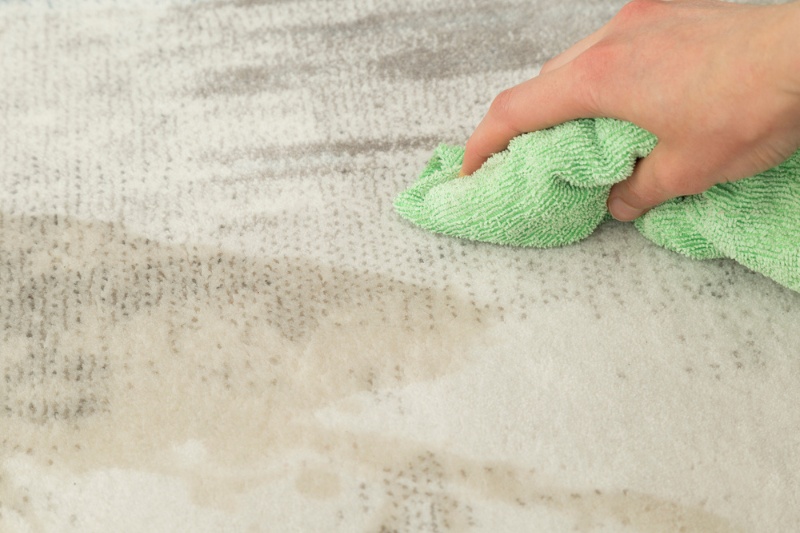
If a carpet gets wet, it doesn’t necessarily mean it’s ruined. Some carpets can be dried and saved.
However, there are cases when the water damage is so significant that the carpet needs to be replaced.
In this case, no amount of drying and cleaning would restore the carpet to its former glory. Plus, it would be unhygienic to keep the carpet in a home!
In addition, how the carpet became wet will also determine whether or not it is ‘ruined’.
For example, if you tipped a glass of water over the floor, as long as you acted fast and removed the liquid from the area, your carpet should be fine.
But if you had a burst sewage pipe’s water all over the carpet, there would be a horrid mucky smell, and the carpet would be an eye sore and totally unhygienic, so it may be classified as ‘ruined’!

Bethan has a passion for exploring, reading, cooking and gardening! When she’s not creating culinary delights for her family, she’s concocting potions to keep her house clean!
